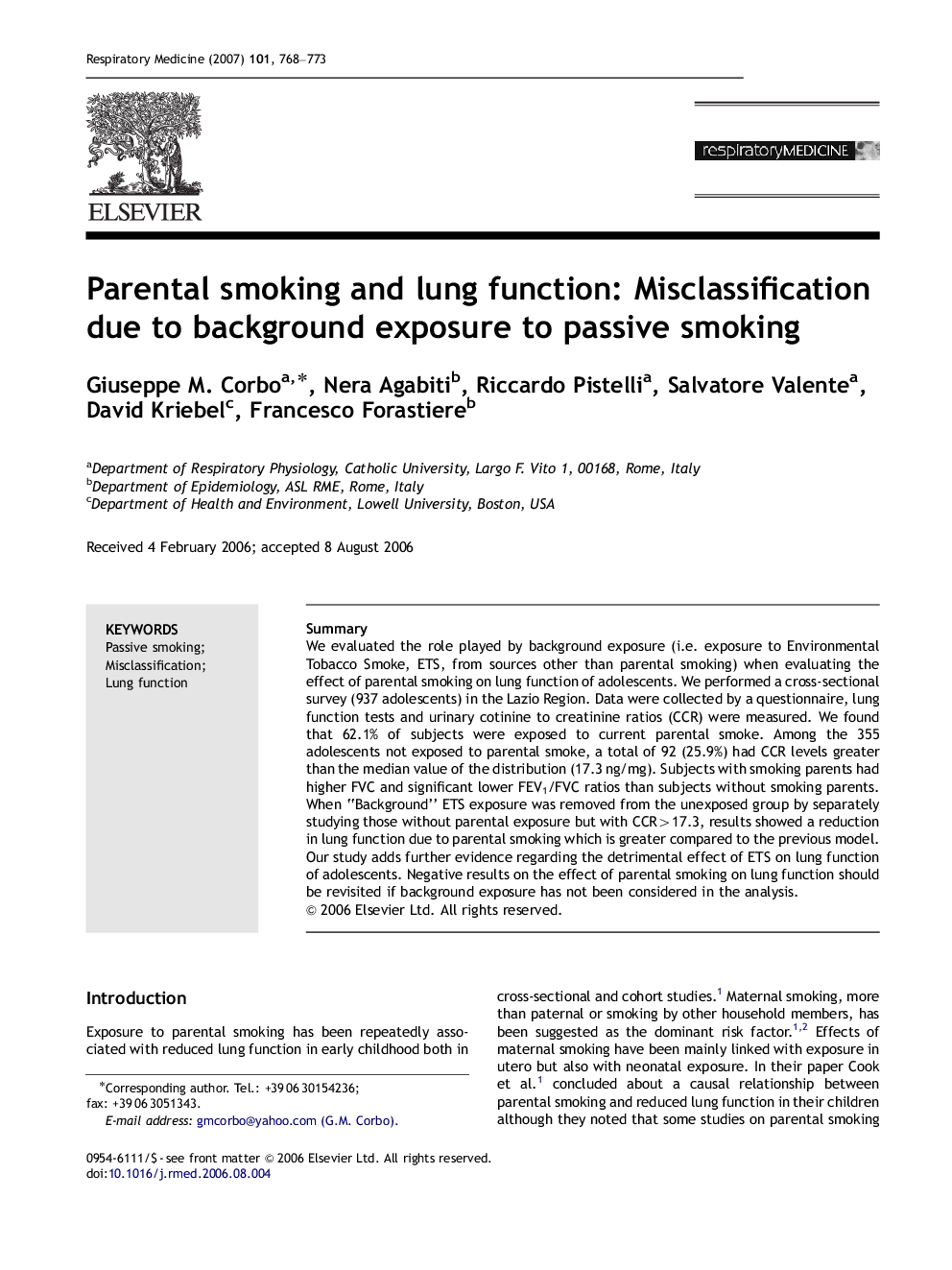| Article ID | Journal | Published Year | Pages | File Type |
|---|---|---|---|---|
| 4212449 | Respiratory Medicine | 2007 | 6 Pages |
SummaryWe evaluated the role played by background exposure (i.e. exposure to Environmental Tobacco Smoke, ETS, from sources other than parental smoking) when evaluating the effect of parental smoking on lung function of adolescents. We performed a cross-sectional survey (937 adolescents) in the Lazio Region. Data were collected by a questionnaire, lung function tests and urinary cotinine to creatinine ratios (CCR) were measured. We found that 62.1% of subjects were exposed to current parental smoke. Among the 355 adolescents not exposed to parental smoke, a total of 92 (25.9%) had CCR levels greater than the median value of the distribution (17.3 ng/mg). Subjects with smoking parents had higher FVC and significant lower FEV1/FVC ratios than subjects without smoking parents. When “Background” ETS exposure was removed from the unexposed group by separately studying those without parental exposure but with CCR>17.3, results showed a reduction in lung function due to parental smoking which is greater compared to the previous model. Our study adds further evidence regarding the detrimental effect of ETS on lung function of adolescents. Negative results on the effect of parental smoking on lung function should be revisited if background exposure has not been considered in the analysis.
